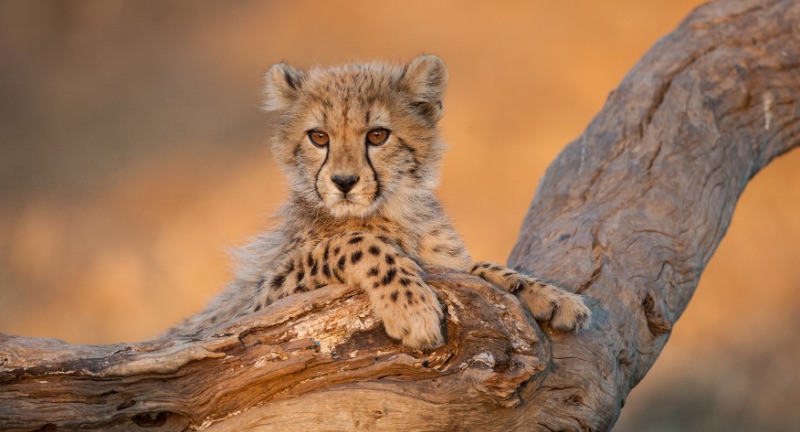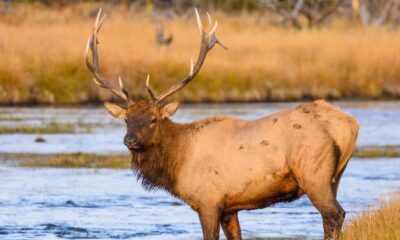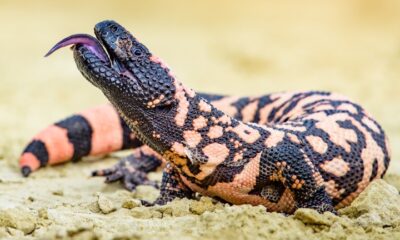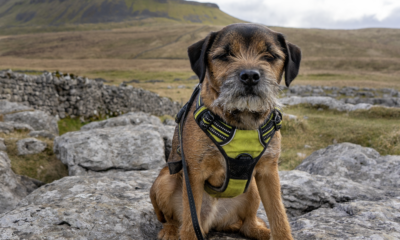NEWS
25 Iconic Animals of the African Safari
Published
3 months agoon

Shutterstock
An African safari is a journey into a world where wildlife thrives in its natural habitat, offering unforgettable encounters and experiences. The sweeping savannas and lush landscapes provide the perfect setting to witness some of the most fascinating animals on the planet. Each creature plays an important role in maintaining the delicate balance of nature, and seeing them in their element is both awe-inspiring and humbling.
A safari isn’t just about spotting wildlife—it’s about connecting with nature and understanding the importance of preserving these incredible ecosystems. Whether you’re an adventurer or a first-time traveler, a safari promises memories that will last a lifetime.
Nile Crocodile

Shutterstock
Nile crocodiles are ancient and formidable reptiles that inhabit rivers, lakes, and wetlands across Africa. As apex predators, they are capable of ambushing and overpowering large prey with their powerful jaws and stealthy hunting techniques. Nile crocodiles play a critical role in aquatic ecosystems by maintaining the balance of species and controlling populations of various animals. Spotting a crocodile basking on a riverbank or stealthily moving through the water underscores the untamed and raw nature of the African wilderness.
Meerkat

Shutterstock
Meerkats are small, social mammals known for their upright posture and cooperative living in underground burrows. They live in tight-knit groups called mobs, where individuals take turns acting as sentinels to watch for predators, showcasing their strong social bonds and teamwork. Native to the Kalahari Desert, meerkats thrive in harsh environments by relying on their agility and collective vigilance. Their playful antics and endearing behaviors make them a charming and entertaining presence on safari tours.
African Wild Dog

Shutterstock
African wild dogs, also known as painted dogs, are endangered predators recognized for their striking coat patterns and highly social pack dynamics. They are among the most efficient hunters, using coordinated teamwork and strategic planning to chase down and capture prey. Their unique vocalizations and strong pack cohesion set them apart from other canids, highlighting their intelligence and adaptability. Encountering a wild dog pack on a safari is a rare and exhilarating experience, emphasizing the importance of conservation efforts to protect these remarkable animals.
Black Rhinoceros

Shutterstock
Black rhinos are critically endangered and serve as powerful symbols of conservation efforts in Africa. Recognized by their distinct hooked lips, black rhinos are solitary herbivores that browse on a variety of vegetation, playing a crucial role in shaping their habitats. Their populations have been severely impacted by poaching for their horns, making protection measures essential for their survival. Safaris in conservation areas provide a rare opportunity to observe these prehistoric-looking giants, emphasizing the importance of ongoing efforts to preserve their populations and maintain biodiversity.
Zebra

Shutterstock
Zebras are instantly recognizable by their unique black-and-white striped coats, each pattern as distinct as human fingerprints. They graze in large herds across the African plains, often migrating alongside wildebeest in search of fresh grazing grounds. The stripes are believed to serve multiple purposes, including deterring predators, regulating body temperature, and reducing biting fly annoyance. Observing zebras in their natural habitat offers a mesmerizing display of social behavior and natural beauty, making them a must-see species on any safari.
Giraffe

Shutterstock
Giraffes are the tallest animals on Earth, with long necks that allow them to reach the high foliage of acacia trees, their primary food source. Their prehensile tongues, which can extend up to 18 inches, enable them to navigate thorny branches and strip leaves with ease. Despite their towering height, giraffes move with surprising grace and can run at speeds of up to 35 mph when necessary. Watching a giraffe silhouetted against the savanna landscape is a breathtaking sight that embodies the elegance and uniqueness of African wildlife.
Hippopotamus

Shutterstock
Hippopotamuses, or hippos, are large, semi-aquatic mammals that spend most of their time in rivers and lakes to keep cool under the scorching African sun. Despite their bulky and seemingly docile appearance, hippos are incredibly aggressive and can be highly dangerous when threatened. Their powerful jaws and sharp teeth are used to defend their territory and young, making them one of the most formidable animals in their habitats. Safaris that include river or lake excursions offer the chance to observe hippos in their natural aquatic environment, showcasing their impressive size and social behaviors.
Hyena

Shutterstock
Hyenas are often misunderstood as mere scavengers, but they are highly skilled hunters with complex social structures. Known for their powerful jaws capable of crushing bone, hyenas play a crucial role in the ecosystem by controlling prey populations and cleaning up carrion. Their distinctive vocalizations, including the famous “laugh,” reflect their intricate communication and social interactions within clans. Observing hyenas on a safari reveals their intelligence, teamwork, and adaptability, highlighting their importance as both predators and scavengers in the African wilderness.
Impala

Shutterstock
Impalas are graceful and agile antelopes that are commonly seen across the African savannas, known for their speed and leaping abilities. They form large herds that provide safety in numbers against predators such as lions and cheetahs. During the breeding season, male impalas engage in spirited battles to establish dominance and attract mates, showcasing their strength and agility. Their elegant movements and vibrant presence add a dynamic element to safari landscapes, making them a favorite among wildlife watchers.
Warthog

Shutterstock
Warthogs are quirky and resilient creatures, easily recognizable by their distinctive tusks and bristly manes. They inhabit a variety of environments, from savannas to woodlands, and are often seen foraging for food while using their tusks to dig for roots and tubers. Despite their stocky appearance, warthogs are surprisingly fast and can evade predators with impressive agility. Their playful behavior and social interactions within groups provide delightful and entertaining moments for safari-goers.
Springbok

Shutterstock
Springboks are elegant gazelles known for their incredible leaping ability, a behavior called “pronking,” which involves high jumps and aerial flips. Adapted to arid environments, springboks are highly resilient and can survive with minimal water, obtaining moisture from the vegetation they consume. Their striking brown-and-white coats and swift movements make them easily identifiable against the open landscapes. Watching springboks perform their energetic leaps is a joyful and inspiring sight that highlights their vitality and grace.
Serval

Shutterstock
Servals are medium-sized wild cats with long legs, large ears, and a sleek, spotted coat that make them excellent hunters in tall grass and dense vegetation. Primarily nocturnal, servals are elusive and rarely seen during the day, making sightings during safari excursions a special treat. They rely on their exceptional hearing and agility to hunt rodents, birds, and other small prey, playing a crucial role in controlling pest populations. The serval’s graceful movements and striking appearance add to the diverse tapestry of African wildlife encountered on safaris.
Vervet Monkey

Shutterstock
Vervet monkeys are small, intelligent primates commonly seen in trees or foraging near human camps on African safaris. Known for their curiosity and playful behavior, they are notorious for stealing food and displaying mischievous antics that delight and sometimes frustrate visitors. Vervets live in complex social groups with intricate hierarchies and communication systems, making their interactions fascinating to observe. Their lively presence adds energy and charm to the safari experience, offering close-up encounters with these engaging and spirited animals.
Eland

Shutterstock
Elands are the largest antelope species in Africa, distinguished by their impressive spiral horns and robust stature. Despite their size, elands are surprisingly agile and capable of making high jumps to escape threats, showcasing their strength and adaptability. They inhabit open grasslands and woodlands, where they graze on a variety of vegetation and contribute to the ecosystem by shaping plant communities. Spotting an eland during a safari highlights the rich diversity of antelope species and the intricate balance of the savanna ecosystem.
Lilac-Breasted Roller

Shutterstock
The lilac-breasted roller is a vibrant and colorful bird that is a favorite among photographers and birdwatchers on African safaris. Its dazzling plumage features a mix of blues, purples, and greens, which it displays prominently while perched on tree branches or poles. This bird is highly active, often seen catching insects midair with remarkable precision and grace. The lilac-breasted roller adds a splash of vivid color to the safari landscape, symbolizing the beauty and diversity of Africa’s avian life.
Bushbaby

Shutterstock
Bushbabies, also known as galagos, are small nocturnal primates celebrated for their large, expressive eyes and extraordinary leaping abilities. Active primarily at night, they feed on insects, fruits, and nectar, using their strong hind legs to navigate the treetops with agility. Their distinctive calls and vocalizations can be heard in the darkness, adding a unique auditory element to the night-time safari experience. Observing a bushbaby requires keen observation and patience, rewarding those who do with a glimpse of these charming and acrobatic creatures.
Ostrich

Shutterstock
Ostriches are the largest and heaviest birds on Earth, renowned for their impressive speed and powerful legs that enable them to run up to 45 mph across open plains. Flightless yet highly adaptable, ostriches use their long necks and keen eyesight to spot predators from a distance, while their strong legs serve both for defense and foraging. Their distinctive appearance, featuring long eyelashes and fluffy feathers, makes them easily recognizable and a striking presence on the African landscape. Additionally, ostrich eggs are the largest of any bird species, highlighting their unique role in the ecosystem.
Pangolin

Shutterstock
Pangolins are rare and enigmatic mammals covered in protective keratin scales, making them one of the most unique creatures on the African continent. Highly nocturnal and solitary, pangolins are expert climbers and burrowers, relying on their strong claws to forage for ants and termites, which form the bulk of their diet. When threatened, pangolins exhibit a remarkable defense mechanism by curling into a tight ball, using their scales as armor against predators. Spotting a pangolin on a safari is a rare and special occurrence, underscoring the importance of conservation efforts to protect these elusive and vulnerable animals.
Dung Beetle

Shutterstock
Dung beetles may be small, but they play an essential role in maintaining the health and balance of African ecosystems. These industrious insects specialize in rolling dung into balls, which they use for food or as breeding sites, effectively recycling nutrients back into the soil. Their activities help control parasites, disperse seeds, and improve soil quality, showcasing the intricate interdependence of species within the savanna. Observing dung beetles in action provides a fascinating glimpse into the often-overlooked aspects of wildlife ecology, highlighting the importance of every creature in sustaining the environment.
Secretary Bird

Shutterstock
The secretary bird is a large, long-legged raptor known for its distinctive appearance and unique hunting style. Native to the open grasslands and savannas of Africa, it uses its powerful legs to stomp on and capture prey, primarily targeting snakes and other small animals. Its striking plumage, which includes long feathers reminiscent of quill pens, adds to its elegant and regal presence in the wild. The secretary bird symbolizes the grace and effectiveness of African raptors, making it a favorite among bird enthusiasts and a standout species on safari excursions.
Lion

Shutterstock
Known as the king of the jungle, lions are iconic African predators that captivate safari enthusiasts worldwide. They inhabit savannahs and grasslands, where their powerful presence is felt through the loud roars that echo across the landscape. Lions live in social groups called prides, which consist of related females, their young, and a coalition of males that work together to hunt and defend their territory. Witnessing a lion in its natural habitat, especially during a pride’s coordinated hunt, is a quintessential safari experience that showcases their strength and social dynamics.
African Elephant

Shutterstock
African elephants are the largest land animals on Earth, renowned for their intelligence, complex social structures, and impressive physical features. They roam vast territories in herds led by a matriarch, often seen congregating at watering holes where they engage in social interactions and bathing. Their long tusks and trunks are versatile tools used for foraging, communication, and defense, making them integral to their survival in diverse environments. Conservation efforts are crucial to protect these gentle giants from threats like poaching and habitat loss, ensuring that future generations can continue to marvel at their grandeur.
Leopard

Shutterstock
Leopards are elusive and solitary big cats, prized by wildlife enthusiasts for their stealth and beauty. Their distinctive rosette-patterned coats provide excellent camouflage in dense vegetation, allowing them to ambush prey with remarkable precision. Skilled climbers, leopards often drag their kills up into trees to keep them safe from scavengers, demonstrating their adaptability and hunting prowess. Spotting a leopard during a safari is a rare and rewarding experience, highlighting the mysterious and captivating nature of these magnificent predators.
Cape Buffalo

Shutterstock
Cape buffalo are among Africa’s most formidable and resilient animals, known for their unpredictable temperament and impressive physical strength. They travel in large herds, which provide protection against predators like lions and crocodiles, showcasing their social resilience. Their massive, curved horns and muscular builds make them a striking and powerful presence on the savanna. Despite their fearsome reputation, Cape buffalo play a vital role in maintaining the ecological balance by influencing vegetation patterns and serving as key prey species for large predators.
Cheetah

Shutterstock
Cheetahs hold the title of the fastest land animals, capable of reaching speeds up to 70 mph in short bursts to catch their prey. Their sleek, slender bodies and distinctive tear-like streaks on their faces aid in reducing glare and improving focus during high-speed chases. Unlike other big cats, cheetahs are diurnal hunters, making them more visible during daylight hours and easier to spot on safaris. Their graceful agility and incredible speed make watching a cheetah in action a thrilling and unforgettable safari highlight.
Conclusion

Shutterstock
An African safari is more than just a trip—it’s a deeply moving experience that connects you with the beauty and wonder of nature. From the thrill of spotting wildlife to the serene moments of soaking in the vast landscapes, every part of the journey leaves a lasting impression. These iconic animals not only captivate us but also remind us of the importance of preserving their habitats for future generations.
More Amazing Animals+
-


20 States Where Elk Still Thrive In The Wild
-


Mama bird feeding her babies in their traffic light nest…
-


More – Alligator arrest outside of a school in Charleston,…
-


23 Animals That Thrive in Desert Climates
-


25 Reasons Why Border Terriers Are the Ultimate Small Dog…
-


25 Fun Facts About Irish Setters That Will Surprise You
-


Do Whales Have Dialects? 25 Reasons They Might
-


20 Most Expensive Cat Breeds Around The World
-


I’ve got some gorilla duct tape if you want it.…
-


25 Things That Make Newfoundland Dogs Gentle Family Guardians
-


21 Key Points to Ponder Prior to Getting a Dog
-


25 Benefits of Having a Basset Hound in Your Family
